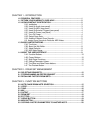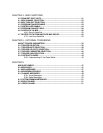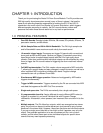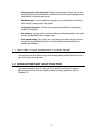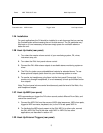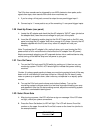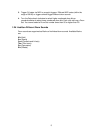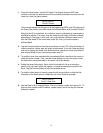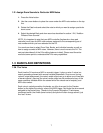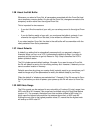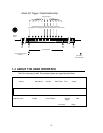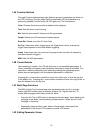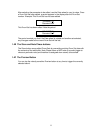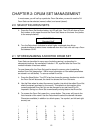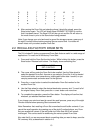
7
1.2I Assign Drum Sounds to Particular MIDI Notes
1. Press the Voice button.
2. Use the cursor buttons to place the cursor under the MIDI note number on the top
line.
3. Rotate the Data knob and select the note to which you want to assign a particular
drum sound.
4. Select the desired Bank and drum sound as described in section 1.2H, “Audition
Different Drum Sounds.”
NOTE: It is important to note that your MIDI controller (keyboard or drum pad
controller) must have its MIDI note numbers assigned to the corresponding set of
note numbers which you have selected for the D4.
You now know how to select Drum Sets, Banks, and individual sounds, as well as
how to assign sounds to MIDI notes. However, there is much more to the D4. The
next part describes all of the D4’s editing features in detail. Please read the entire
manual at some point to understand the D4’s many capabilities.
1.3 BASICS AND DEFINITIONS
1.3A The Voice
Each time the D4 receives a MIDI or acoustic trigger, it plays a voice. A voice is a
sound-generating element with several variable parameters: Drum sound, tuning,
volume, output assignment (the voice’s audio output can go to either one of two sets
of stereo outputs), panning (the voice’s audio output can be positioned at any of the
seven positions available within the stereo field of the chosen set of outputs), and
MIDI note number.
Each voice is velocity-sensitive: the harder you hit a drum pad (or the Preview
button) or the higher the velocity value of the MIDI trigger, the louder the drum sound
assigned to the pad will play. Thanks to the Dynamic Articulation™ techniques
mentioned earlier, the timbre (tonal content) and pitch will often change as well, just
like “real” drums.



